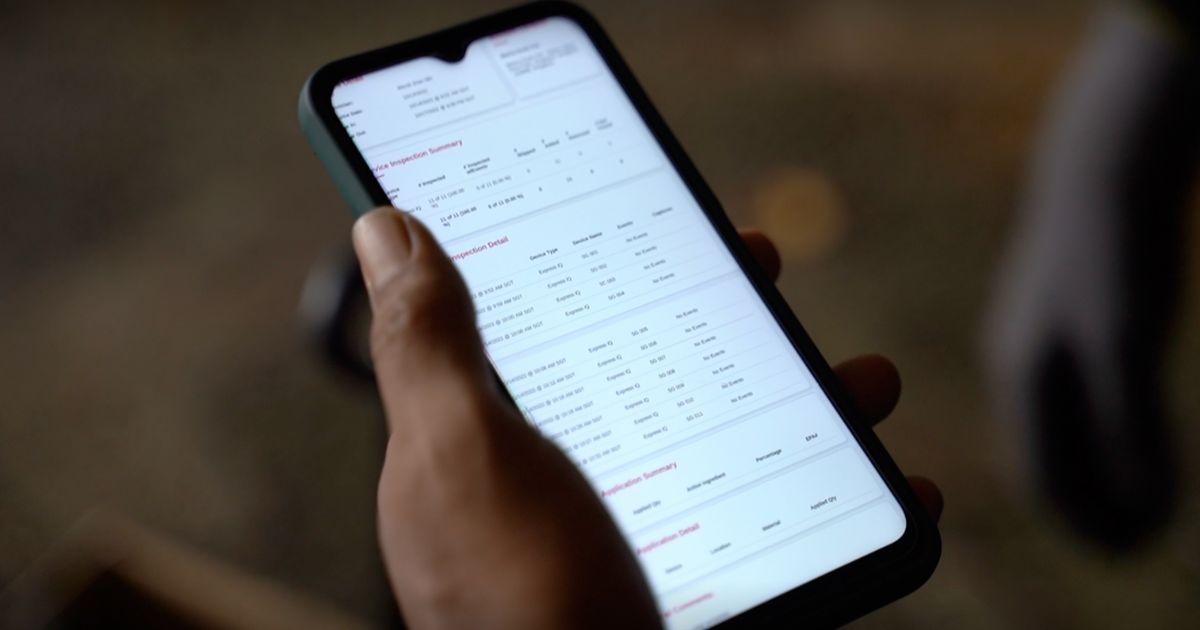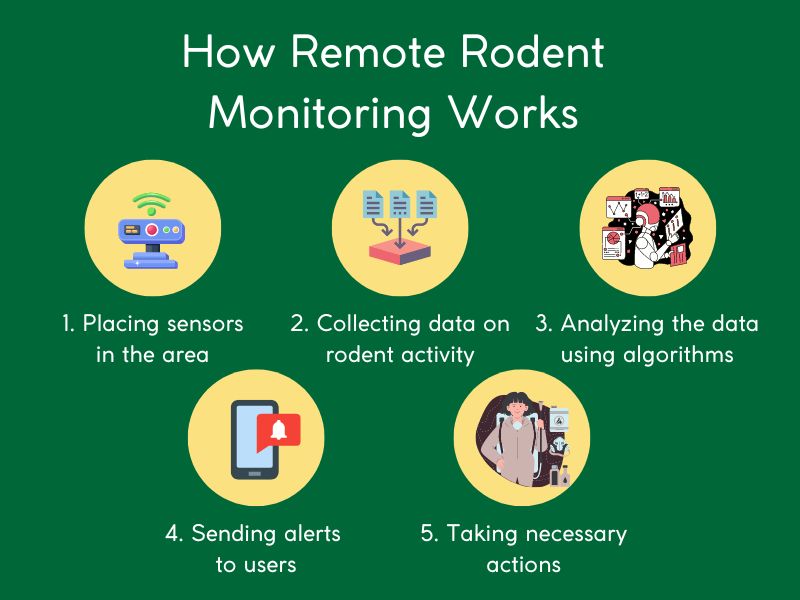Remote Rodent Monitoring System: A Guide to What, Why & How

As technology continues to transform various industries, pest control is no exception. Traditional pest control methods often involve time-consuming and labor-intensive approaches. However, the rise of new tech solutions like remote rodent monitoring has offered pest professionals a more effective way to manage these unwanted invaders.
What is Remote Rodent Monitoring?
Remote rodent monitoring is a modern technology that allows individuals and businesses to detect and track rodent activity in real-time. These monitoring systems consist of sensors, data analysis and communication methods that notify users about the potential infestations. Using remote rodent monitoring for pest control offers some advantages compared to traditional solutions.

How the Remote Rodent Sensing Technology Works
The remote rodent monitoring process involves several steps:
- Placing sensors throughout the monitored area. One can place sensors in walls, floors, or ceilings, and they can detect rodent movements, sounds or heat signatures.
- Collecting data on rodent activity. Once sensors are set up, they start to collect the data and send it to the servers for real-time analysis.
- Analyzing the data using advanced rodent monitoring algorithms. The systems can determine the location, frequency and severity of rodent activity. They can also distinguish the rodent activity signals from other factors like wind or vibration.
- Alerting users about rodent activity. If rodent activity is being detected, the system automatically generates alerts and sends them via email or text message to the users. The system also generates reports that users can check through web-based solutions or mobile app. This proactive approach allows users to take necessary actions and prevent severe infestations.
- Taking necessary actions. Once users get alerted about rodent activity, they can take immediate actions to address the problem. This may include setting traps, sealing entry points, or hiring a pest control professional to address the issue.

Advantages of Remote Rodent Monitoring Over Traditional Pest Control
Remote rodent monitoring has several advantages over traditional pest control methods. Some of the benefits include:
- Early detection and intervention: Remote rodent monitoring systems allow users to detect infestation early and take action before infestation becomes severe. This, in return, prevents costly property damage and repairs.
- Non-Toxic: Remote rodent monitoring is a safer alternative to traditional pest control methods, as it doesn’t require use of toxic chemicals and pesticides. This means reduced health risks for people and less environment
- Cost-Effective: Rodent monitoring systems can be more cost-effective than traditional pest control methods. Besides reducing costly damage, they allow to detect the first signs of the infestation, thus requiring less manpower to deal with the infestation.
- Data-Driven: Remote rodent monitoring systems use advanced algorithms to analyze data about rodent activity. This allows users to take targeted action to prevent infestations in specific areas.
- Proactive: While traditional pest control methods are reactive (applied once the infestation is discovered), remote monitoring systems allow to take quick proactive measures before the infestation is in place.
Remote Rodent Monitoring Limitations
Even though remote rodent monitoring systems are an innovative solution for detecting and preventing rodent infestations, they do have limitations. Here are some of the main limitations:
- Remote rodent monitoring systems can generate false positive They can be caused by environmental factors or non-rodent species that can trigger sensors, and can lead to unnecessary alarms and costs.
- The range of remote rodent monitoring systems have limited detection range. This can be caused by the placement and sensitivity of the sensors. For complex areas one might need to install multiple sensors to get the full coverage of the area.
- Remote rodent monitoring systems can detect only a limited range of rodent infestations signs. Some specific signs like droppings, tail swipes, footprints, smells, simply cannot be detected by sensors.
- Remote rodent monitoring systems do not provide measures for removing rodents, they can only help to detect and prevent infestations. To remove the rodent infestation, you will still need to use traditional pest control methods, such as trapping or baiting.
- Remote rodent monitoring systems can be costly to install and maintain. The cost of the system depends on the size of the monitored area and the complexity of the installation.
- Remote rodent monitoring systems depend on technology, which can break and show
Pro Tip: For best results, combine remote rodent monitoring with traditional pest control methods.
Combining Remote Rodent Monitoring with Traditional Pest Control Methods
Rodent control services have changed dramatically over the years. However, automated monitoring systems won’t be able to replace pest control experts and traditional methods. Combining them with traditional pest control methods is the best way to provide comprehensive coverage against rodent infestations.
If you are looking for a comprehensive solution, don’t hesitate to reach out to Killem Pest. We provide clients with a complete rodent control package that includes rodent monitoring devices installed strategically, as well as traditional pest control methods.

Pest Problem? Let Us Help.
We offer fast and effective precision treatments to eliminate pests while ensuring a safe environment for your home or business.
Author: Soleha Nisaa
Frequently Asked Questions
Yes, remote rodent monitoring can be used in various areas, including residential homes, commercial buildings, food processing facilities, and agricultural environments.
Yes, remote monitoring can help prevent rodent infestations from causing property damage, contamination, and health risks associated with rodent-borne diseases.
Yes, some remote rodent monitoring systems can distinguish between different types of rodents based on their size, movement patterns, or other characteristics. This information can be then used to customize the rodent control strategy.
Yes, remote rodent monitoring systems can be used both indoor and outdoor environment like gardens, agricultural fields, and industrial sites. Outdoor systems can withstand environmental conditions and can provide insights into rodent behavior in open spaces.






